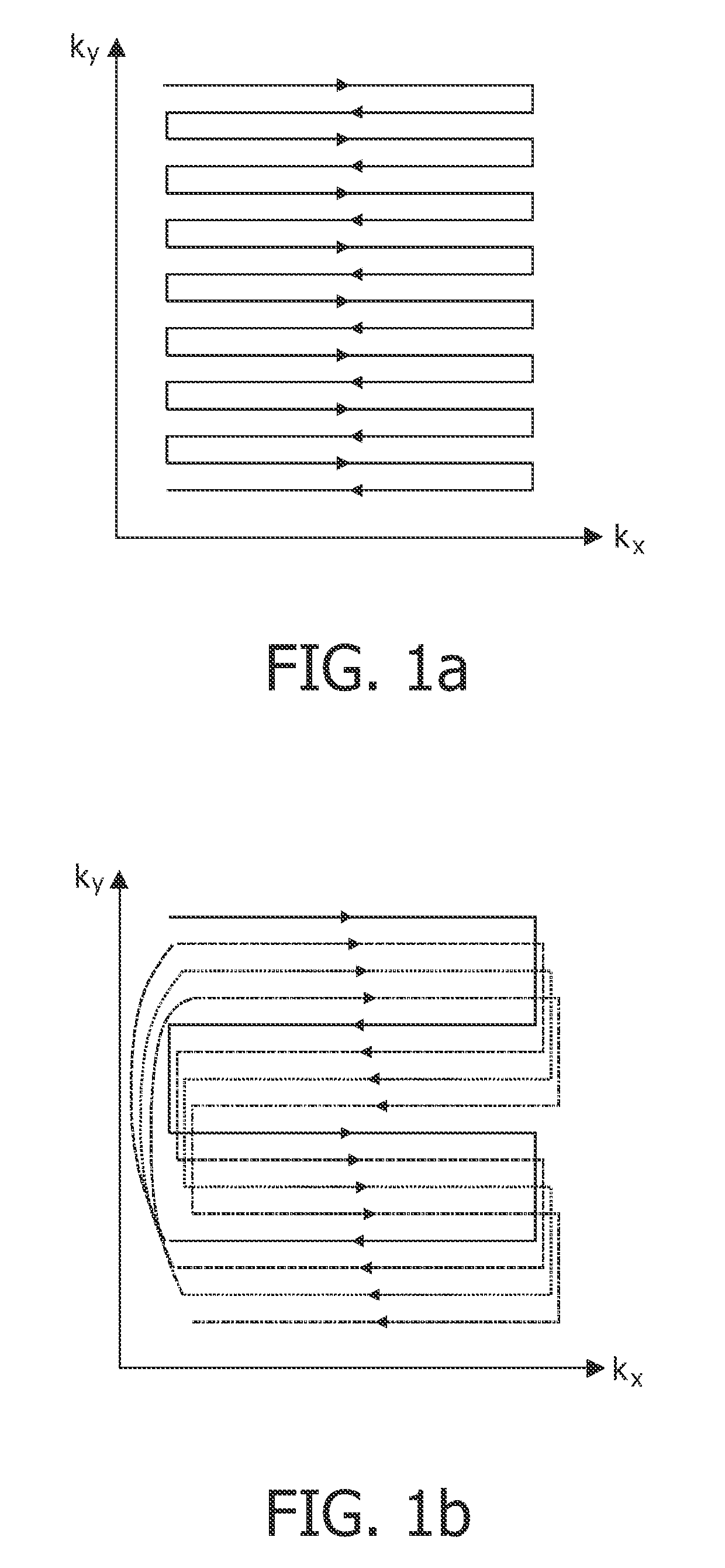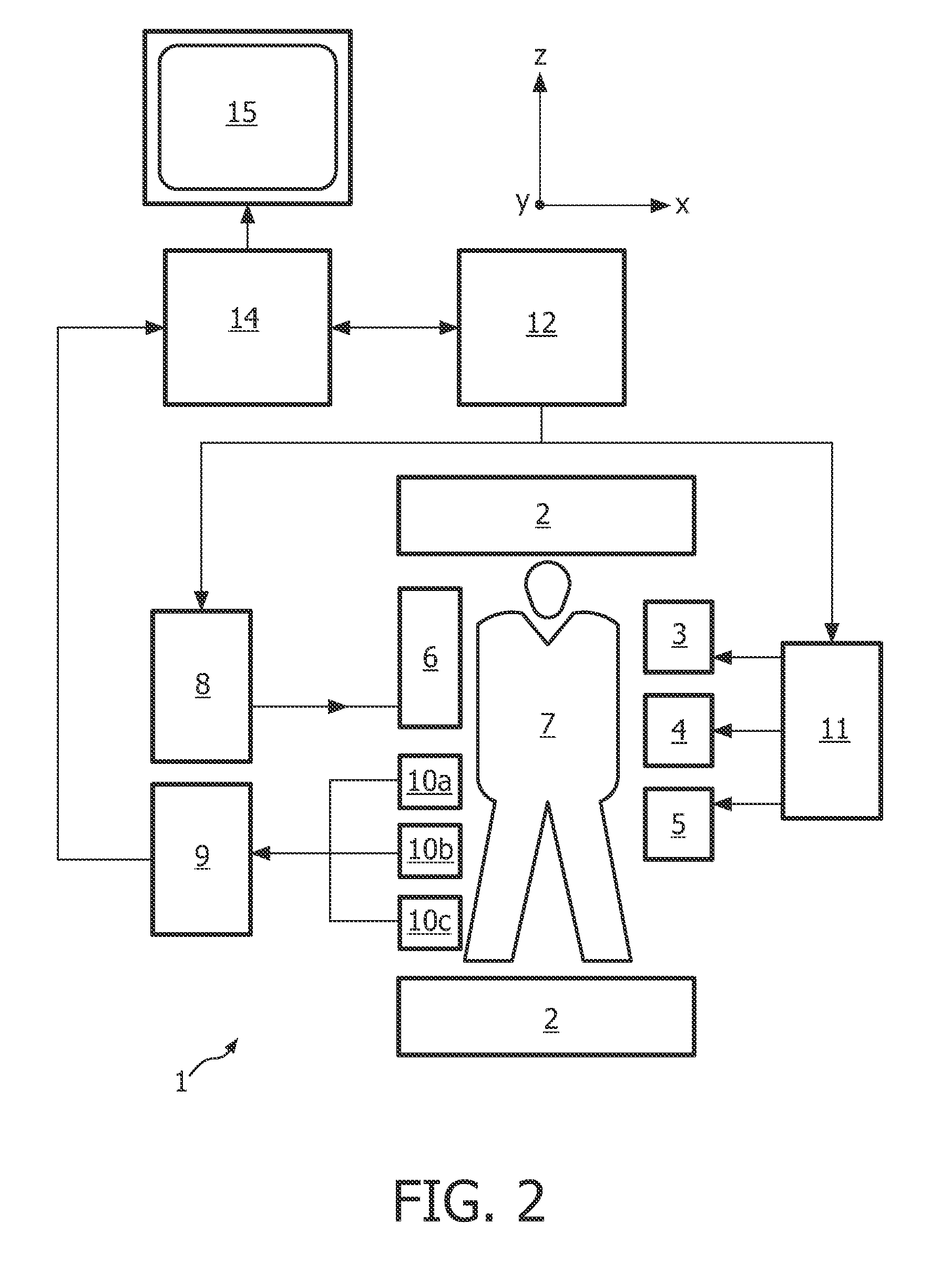Magnetic resonance device and method
a magnetic resonance and device technology, applied in the field of magnetic resonance, can solve the problems of reducing the transmission rate of rf energy, affecting the accuracy of mr devices, and prone to significant image distortion of epi, so as to achieve the effect of improving the mr device and reducing the transmission rate of rf power
- Summary
- Abstract
- Description
- Claims
- Application Information
AI Technical Summary
Benefits of technology
Problems solved by technology
Method used
Image
Examples
Embodiment Construction
[0032]Conventionally, an EPI sequence traverses k-space as shown in FIG. 1a. The zig-zagging k-space trajectory of the generated and acquired MR echo signals is progressing comparatively slowly in the phase encoding direction ky. The invention proposes a faster progression in k-space by taking larger ky steps, as can be seen in FIG. 1b. In order to fully cover k-space, four separate sub-sequences of MR echo signals are generated in accordance with the shown embodiment. Their k-space trajectories are depicted in FIG. 1b by solid, dashed, dotted, and dashed / dotted lines, respectively. Each sub-sequence traverses a different trajectory in k-space. It is evident that the overall scanning time to acquire and sample MR signals along the complete trajectory shown in FIG. 1b is substantially equal to the time required according to the conventional scheme shown in FIG. 1a. Yet, in the embodiment of FIG. 1b, k-space is traversed four times faster in the phase encoding direction by a single su...
PUM
 Login to View More
Login to View More Abstract
Description
Claims
Application Information
 Login to View More
Login to View More - R&D
- Intellectual Property
- Life Sciences
- Materials
- Tech Scout
- Unparalleled Data Quality
- Higher Quality Content
- 60% Fewer Hallucinations
Browse by: Latest US Patents, China's latest patents, Technical Efficacy Thesaurus, Application Domain, Technology Topic, Popular Technical Reports.
© 2025 PatSnap. All rights reserved.Legal|Privacy policy|Modern Slavery Act Transparency Statement|Sitemap|About US| Contact US: help@patsnap.com



